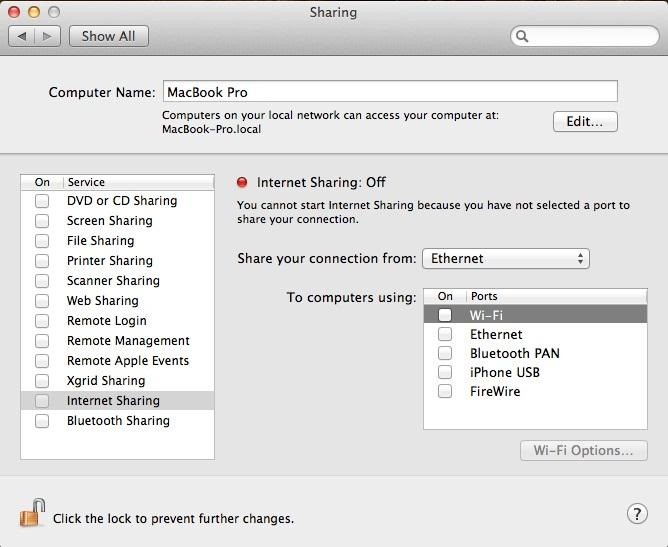
A green dot next to any entry indicates that the connection is active and available to use. A Mac that sports an ethernet port and carries Wi-Fi circuitry will, at the very least, display ethernet and Wi-Fi entries. Exactly what you see here depends on the Mac you’re using. Now that the theory portion of the lesson is over, let’s move to its practical application by choosing System Preferences from the Apple menu and selecting the Network preference.Īlong the left side of the Network window, you’ll see any network avenues available to you. And the router’s IP addresses are the many doors you use to enter and exit your home. Imagine that the IP address assigned by your ISP is a road in front of your house. I don’t want to burden you with a load of technical terms, so perhaps an analogy will help you understand how they all fit together. An easy way to think of a local IP address is as the device’s network name-like Shane, Courtney, Anastasia, or Gub-Gub-only in this case, the name is represented by a string of numbers separated by periods ( 192.168.0.22 or 10.0.1.29, for instance). When you log on to your network with your Mac or an iOS device, it’s assigned one of these addresses. The router creates a number of internal IP addresses-private addresses used only within your local network. The router, as its name implies, routes devices connected to it (either with a wire or via Wi-Fi) so that they can access your Internet connection. (If you have a static account, you’ll always have the same IP address if you have a dynamic account-which is most common-your IP address can change.) This IP address is your main thoroughfare to the Internet. This address is selected from a range of addresses that the ISP owns, and it can change depending on the kind of account you’ve signed up for.


In most cases, the modem/router relationship works this way: Your Internet service provider assigns something called an IP address to your Internet account. When you signed up for that service, either someone installed it for you or you were sent the gear you needed and you followed the instructions necessary to connect to the Internet. I’m going to assume that you already have some variety of Internet service-along with a broadband modem (the box that brings broadband Internet service into your home or office) that includes or is connected to a router (a device that distributes network addresses to computers and mobile devices connected to it).


 0 kommentar(er)
0 kommentar(er)
